In the circuit shown in figure E,F, G and H are cell of emf 2,1,3, and 1V respectively. The resistances 2,1,3 and 1(Omega)are their respective internal resistance .Calculate (a)the potential difference between B and D and (b) the potential differences across the terminals of each of each of the cells G and H.
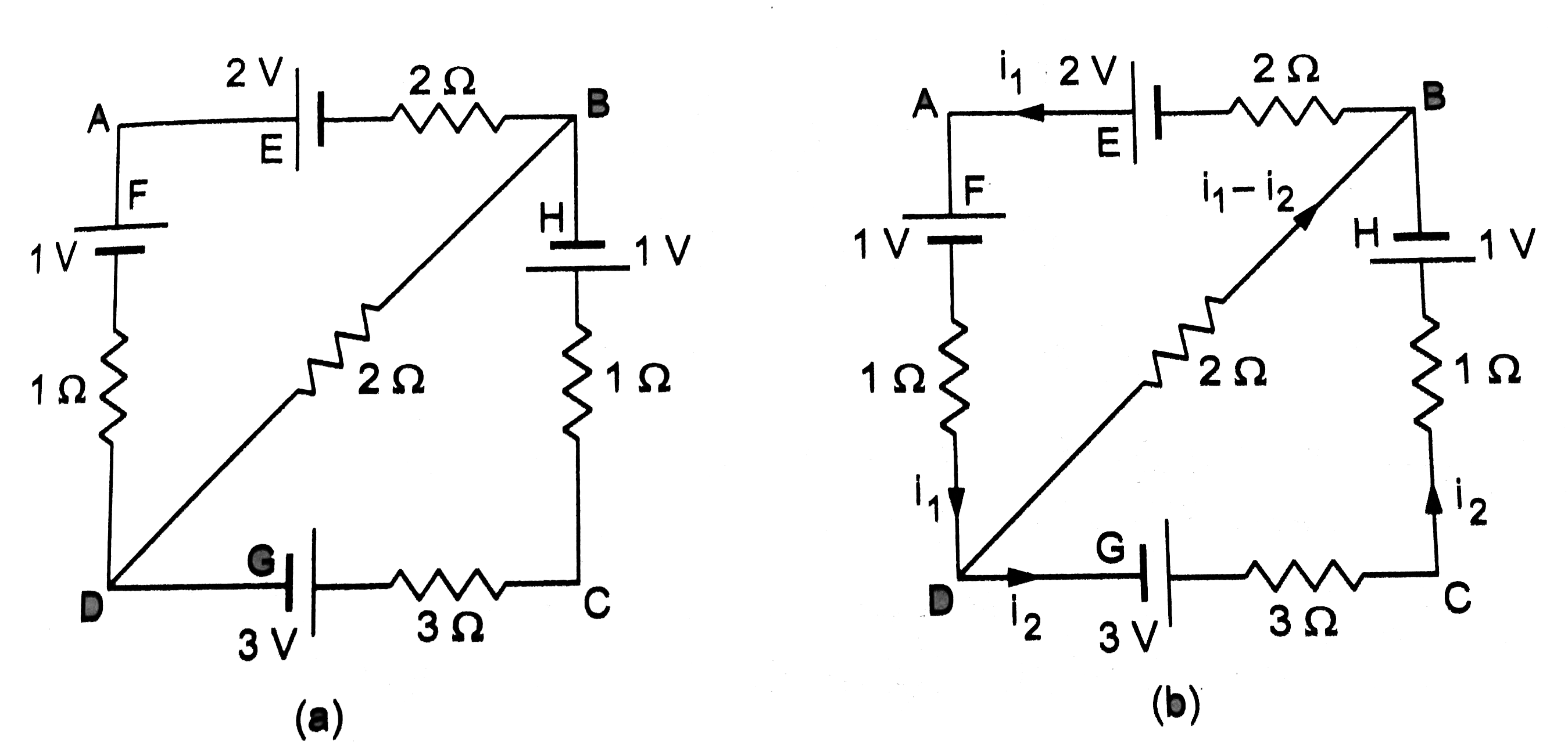 Solution in Gujrati
Solution in Gujrati
2112V.
213V.
2114V.
2113V.
The correct Answer is:D
Suppose a current i_(1) goes in the branch BAD and current i_(2) in the branch DCB. The current in DB will be i_(1)-i_(2) from the junction law. The circuit with the currents shown is redrawn in figure. Applying the loop law to BADB we ge,
(2(Ω))i1−2V+1V+(1(Ω))i1+(2(Ω))(i1−i2)=0
(5(Ω))i1−(2(Ω))i2=1V....(i)
Applying the same law to the loop DCBD,we get
−3V+(3(Ω)i2+(1(Ω))i2+1V−(2(Ω))(i1−i2)=0
or,−(2(Ω))i1+(6(Ω))i2=2V....(ii)
From (i)and (ii),
i1=513A,i2=613A.
sotˆi_(1)-i_(2)=1/13A.<br>thecurrent∈BDisomB→D.<br>(a)V_(B)-V_(D)=(2(Omega)((1)/(13)A)=(2)/(13)V.<br>The potential difference across the cell G is
Vc−Vd=−(3(Ω))i2=3V.
=(3V−1813V)=2113V.
Thepotentiald⇔erenceacrossthecellHis<br>V_(C)-V_(B)=(1(Omega))i_(2)+1V=(1(Omega))((6)/(13)A+1V=(19)/(13)V.
Topper's Solved these Questions
- ELECTRIC CURRENT IN CONDUCTORSBOOK - HC VERMACHAPTER - ELECTRIC CURRENT IN CONDUCTORSEXERCISE - worked out Example
1 Videos
- ELECTRIC CURRENT IN CONDUCTORSBOOK - HC VERMACHAPTER - ELECTRIC CURRENT IN CONDUCTORSEXERCISE - Short Answer
17 Videos
- ELECTRIC CURRENT IN CONDUCTORSBOOK - HC VERMACHAPTER - ELECTRIC CURRENT IN CONDUCTORSEXERCISE - Exercises
84 Videos
- DISPERSION AND SPECTRABOOK - HC VERMACHAPTER - DISPERSION AND SPECTRAEXERCISE - Exercises
11 Videos
- ELECTRIC CURRENT THROUGH GASESBOOK - HC VERMACHAPTER - ELECTRIC CURRENT THROUGH GASESEXERCISE - Exercises
23 Videos
Similar Questions
Find the equivalent resistances between the points a and c of the network shown in figure. Each resistance is equal to r.
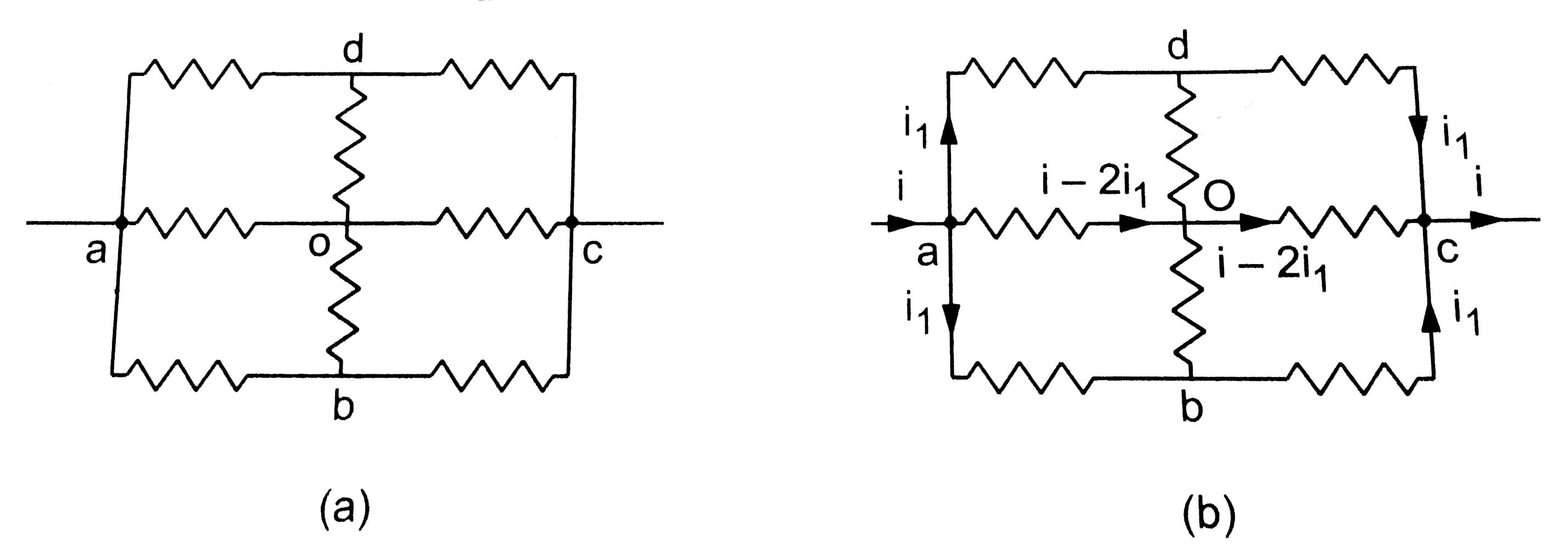
View SolutionSuppose you have three resistor each of value (30Ω).List all the different resistances you can obtian using them.
View SolutionThe amount of charge passed in time t through a cross-section of a wire is
Q(t)=At2+Bt+C.
(a)Write the dimensional formulae for A,B and C.
(b) If the numerical values of A,B,and C are 5,3 and 1 respectively in SI units,find the value of the current at t=5 s.
View SolutionA flint glass prism and a crown glass prism are to be combined in such a way that the deviation of the mean ray is zero. The refractive index of flint and crown glasses for the mean ray are 1.620 and 1.518 respectively. If the refracting angle of the flint prism is 6.0∘, what would be the refracting angle of the crown prism ?
View SolutionA discharge tube contains helium at a low pressure. A large potential difference is applied across the tube. Consider a helium atom that has just been ionized due to the detachment of an atomic electron. Find the ratio of the distance travelled by the free electron to that by the positive ion in a short time dt after the ionization.
View SolutionIn the circuit shown in figure E,F, G and H are cell of emf 2,1,3, and 1V respectively. The resistances 2,1,3 and 1(Omega)are their respective internal resistance .Calculate (a)the potential difference between B and D and (b) the potential differences across the terminals of each of each of the cells G and H.

View SolutionIn the circuit shown in E, F, G, and H are cells of emf 2,1,3 and 1 V, respectively. The resistances 2Omega, 1Omega, 3Omega and 1Omega are their respectivle internal resistances. i. Find the potential difference between B and D. (ii) Calculate the potential differences across the terminals of each of the cells G and H.
View SolutionIn the given circuit , the potential difference across the capacitor is 12 V. Each resistance is of 3Ω. The cell is ideal. The emf of the cell is
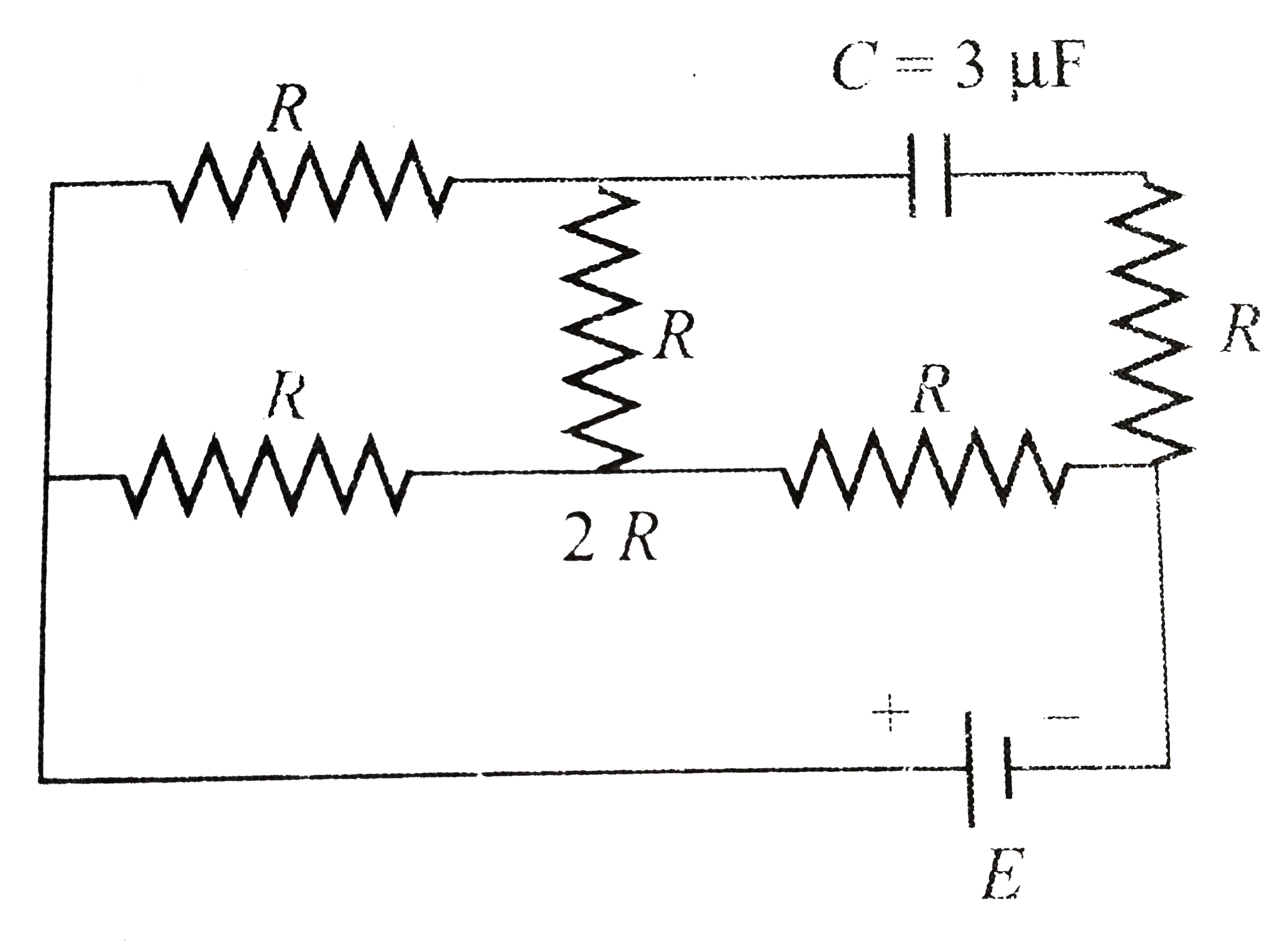
View SolutionIn the circuit E,F,G,Hare cell of emf 2,1,3and 1Ω respectively .The potential difference across the terminal of each of the cell G and H are

View Solution(a) Find the potential difference between A and B
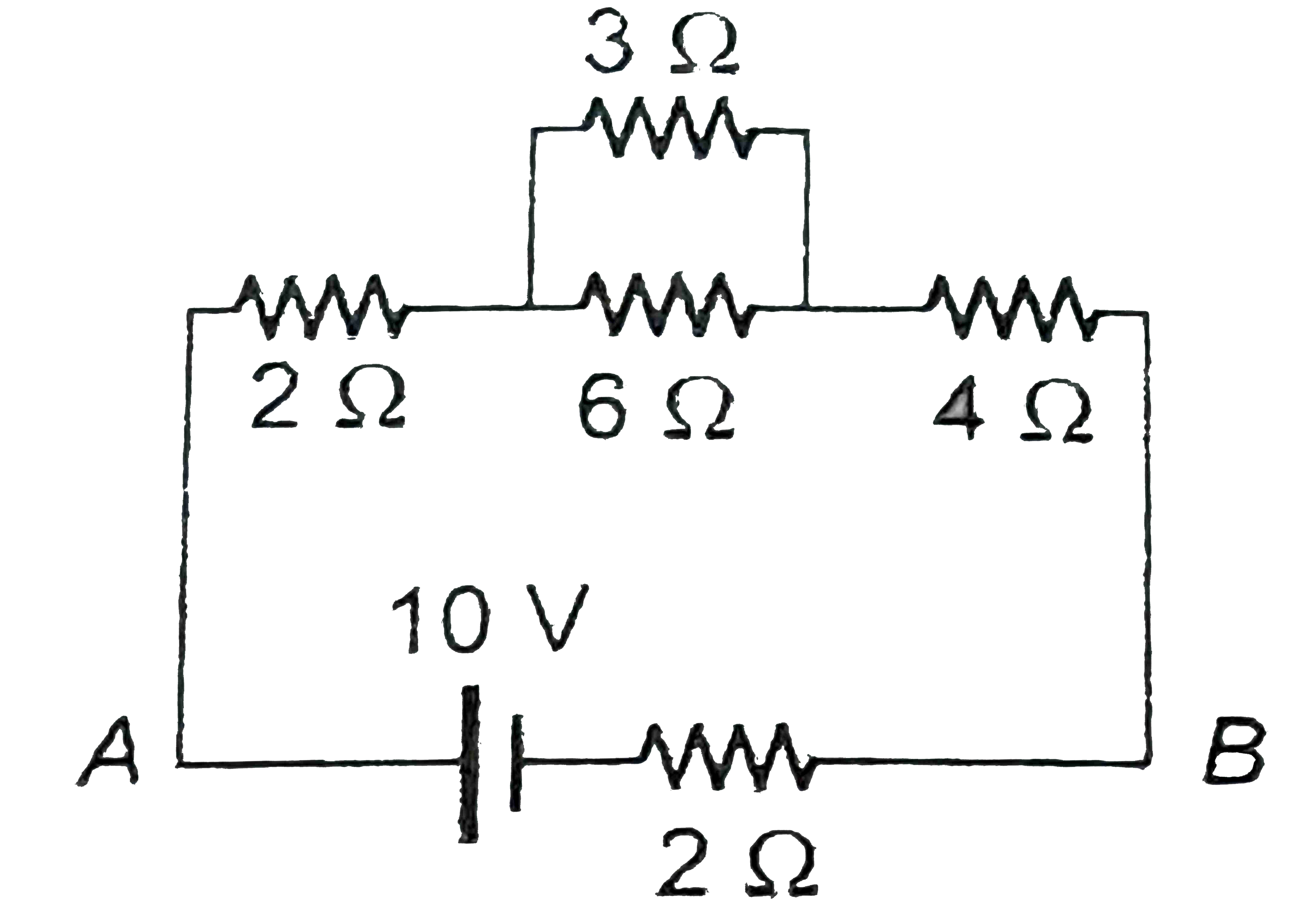
(b) Calculate the current flowing in the circuit and the potential difference across terminals of each cell.
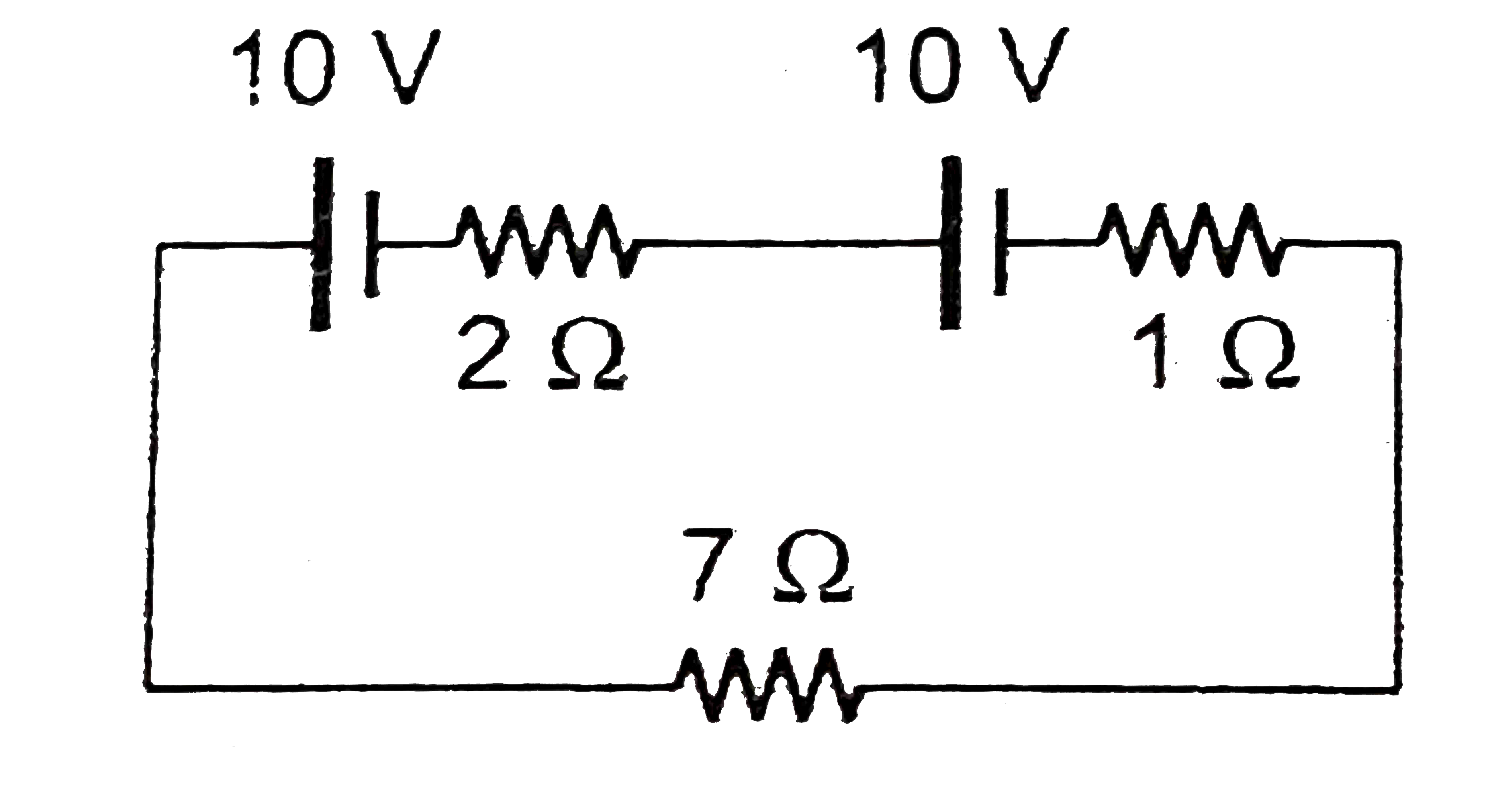
( c) Calculate the potential difference across terminals of each cell.
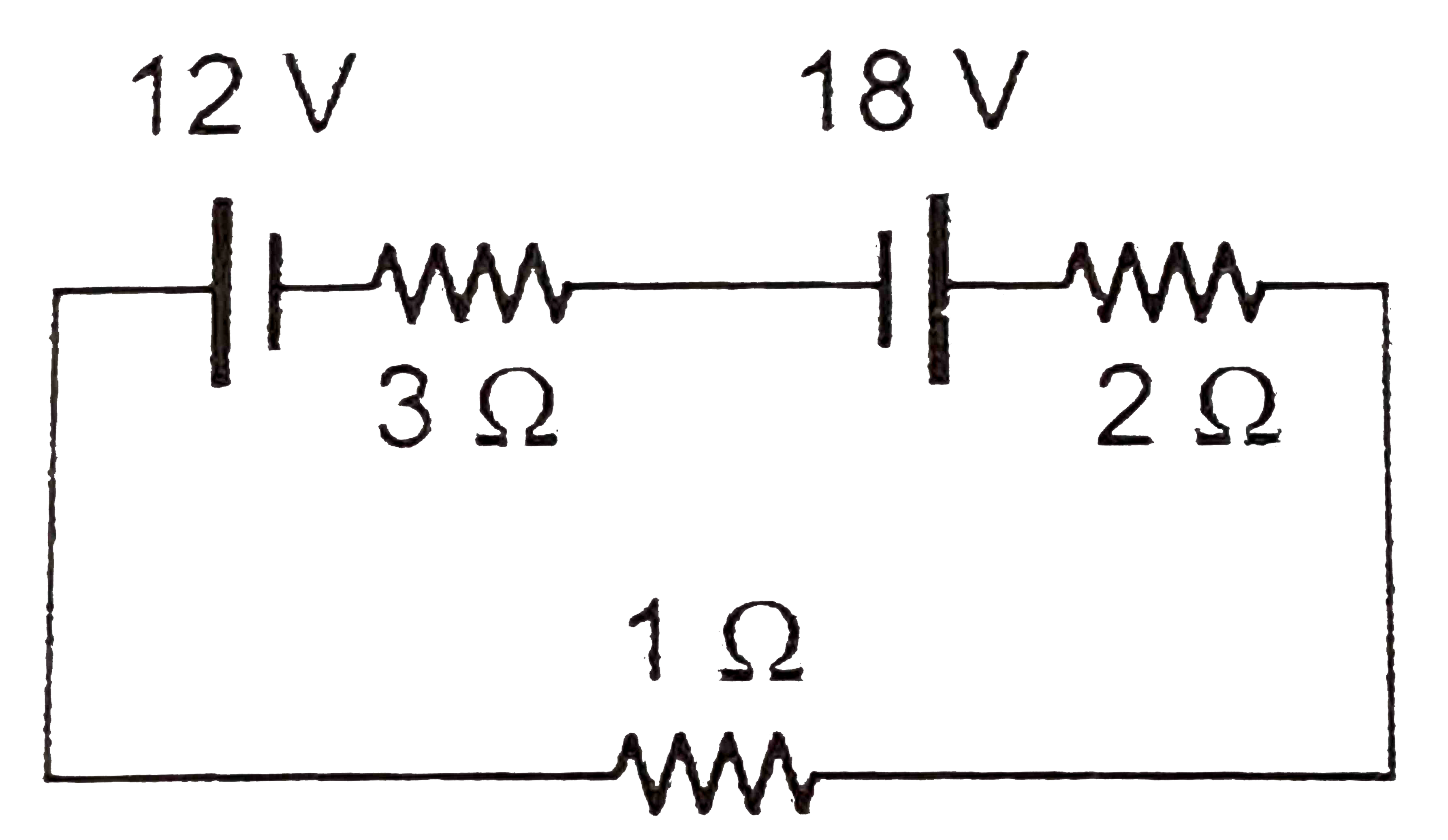
(d) Calculate the potential difference between A and B
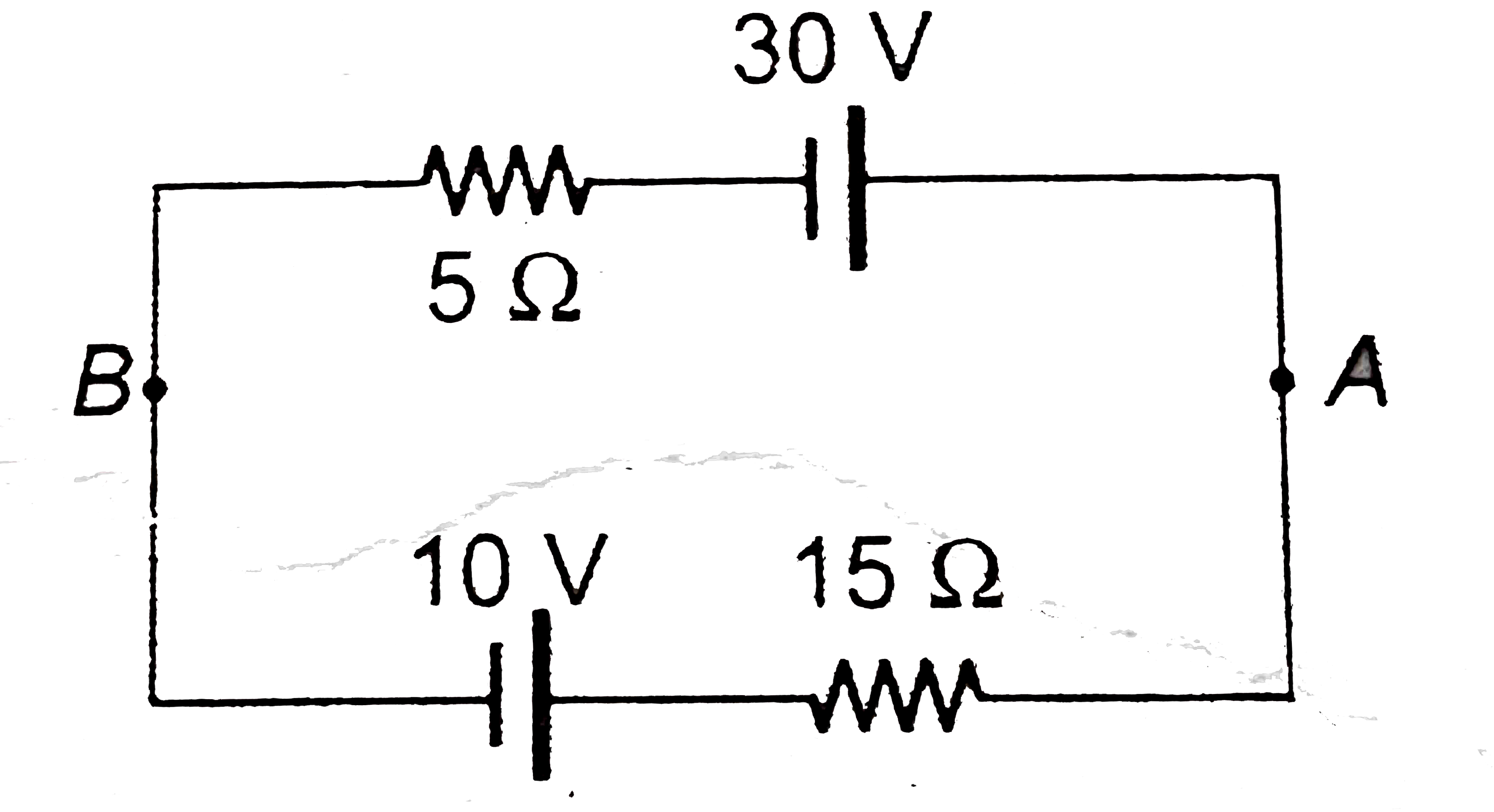
( e) Calculate the current in each resistor and terminal potential difference across each cell.

(f) Calculate potential difference across each cell.

(g) A battery of 6 cells each of emf 2V and internal resistance 0.5Ω is being changed by DC mains of emf 220V by using an external resistance of 10Ω. Calculate.
(i) the charging current
(ii) the potential difference across the battery.
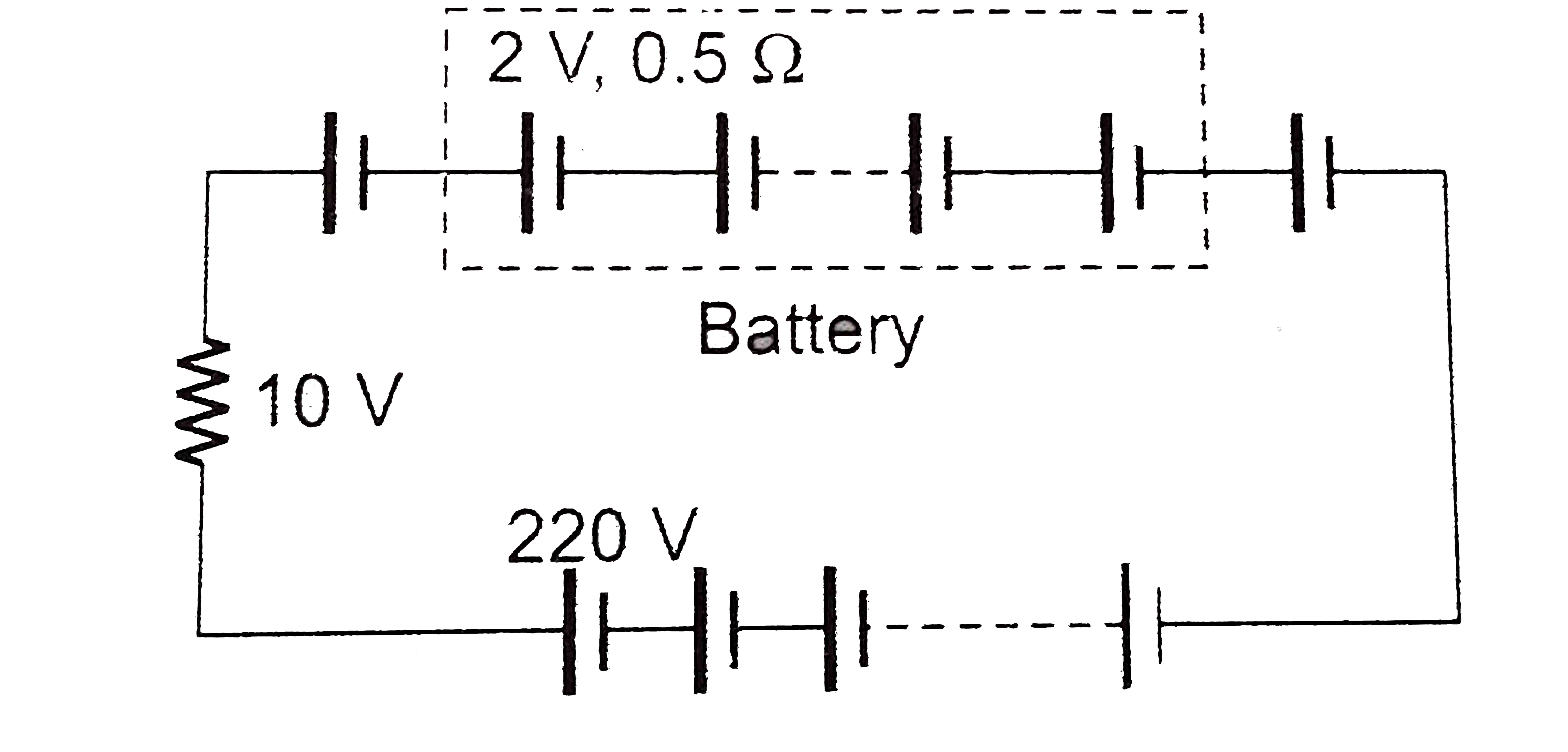 .
.
View SolutionIn the circuit shown in figure-3.159 cells E,F,G and H are of EMF 2V, 1V,3V and 1V respevitly and their internal resitance are 2Omega,1Omega,3Omega and 1Omega respectively Calculate (a) The potential difference between points B and D (d) The potential difference across the terminals of the cell G and H.
View SolutionIn the circuit shown in figure. The cells E,F,G and H have e.m.f's 2,1,3 and 1 V and internal resistance 2,1,3 and 1Omega respectively. Find the potential differences between points B and D, and across the terminals of the cells G and H.
View SolutionA cell of emf 2.1 V and 0.1Ω internal resistance sends 100 mA current in an external circuit. Determine the external resistance,terminal potential difference across that resistance and internal potential drop of the cell.
View Solutionचित्र में दिखाए गए प्रतिरोध में E,F,G तथा 11 क्रमश: 2,1,3 तथा 1 वोल्ट वी० वा० बल की सेलें है| इनके आंतरिक प्रतिरोध क्रमश: 2,1,3 तथा 1Ω है| गड़ना कीजिए
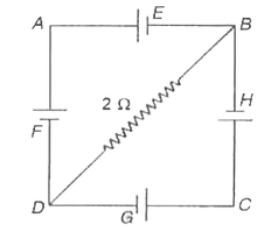
(a) B तथा D के बीच विभवांतर
(ii) G तथा H प्रत्येक के टर्मिनलों के बीच विभवांतर
View SolutionThe potential difference betwee11 the terminals of a cell in an open circuit is 2.2 V. When a resistor of 5Ω is connected across the terminals of the cell, the potential difference between the terminals of the cell is found to be 1.8 V. The internal resistance of the cell is
View SolutionThe emf of the batteries E, F, G and H are 2 V, 1 V, 3 V and 1 V respectively. Their internal resistance are respectively 2Ω,1Ω,3Ωand1Ω respectively. Calculate potential difference between B and D.
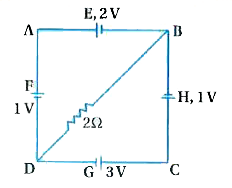
View Solution
